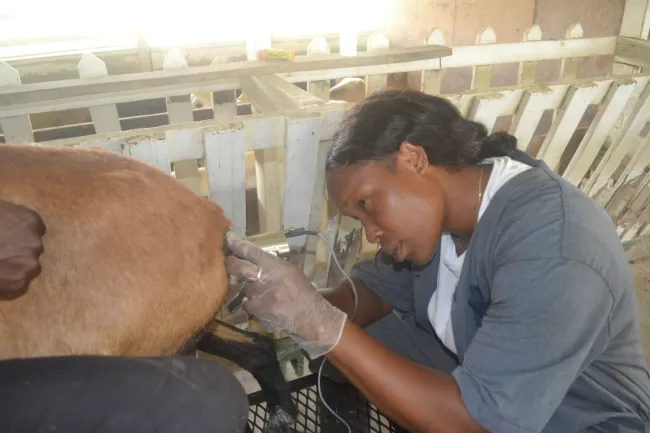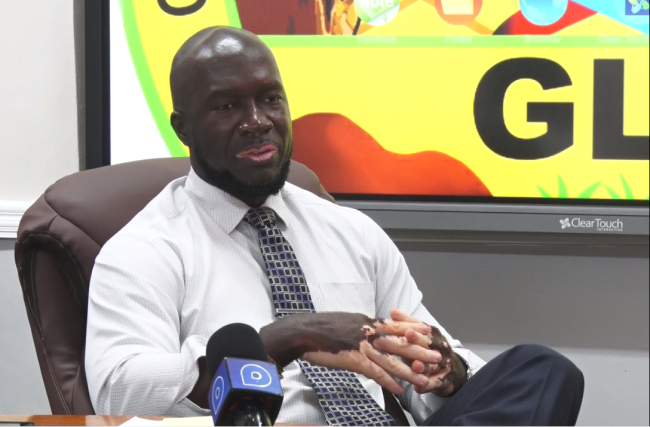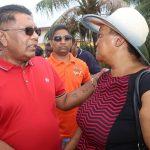The Guyana Livestock and Development Authority’s (GLDA) artificial insemination (AI) programme is progressing smoothly, and over 200 cattle are expected to be inseminated by year-end in Region Nine.
The programme’s objective is to improve the growth of the country’s livestock sector while advancing Guyana’s food security efforts, locally and regionally.
Artificial insemination, which is the placement of semen suspension into the female reproductive tract, commenced in Aranaputa, North Rupununi by the Guyana Livestock and Development Authority (GLDA), staff in May, where 66 animals were inseminated.
Guyana imported two Santa Gertrudis bulls. The semen from those bulls will be used primarily in Region Nine and the intermediate savannahs.
Speaking with the Department of Public Information (DPI) on Wednesday, GLDA’s Chief Executive Officer, Dr Dwight Walrond noted that GLDA is extremely pleased to commence the programme in the region.
While outlining the mechanics and target for the programme, Dr Walrond explained that GLDA had programmed to start the initiative in the region because of the weather, so they could have easy access.
A team is scheduled to return by October month-end, to complete the additional 120 animals that were selected to be inseminated in the region.
“We are already in excess of 100 inseminations in the region… For the year 2023, we would have planned to do 200 AI in all three of the sub-districts in Region Nine. Fortunately for the farmers and unfortunately for GLDA, we had to adjust our work programme to suit what was happening on the ground. I am optimistic that we will surpass that 200 target that was set,”Dr Walrond underlined.
This activity fulfils a promise made to the people by President, Dr Mohamed Irfaan Ali in April during his visit to the community.
Based on the demand from the communities and the obstetric works that were done by GLDA, Dr Walrond added, “we will have to spend some additional time in Region Nine to ensure that we can satisfy the demand of the remaining communities…”
Dr Walrond outlined the benefits of the programme to farmers and the sector, “If we are able to inseminate those animals with some diary breeds, they will have access to fresh milk. So, they don’t have to travel a day and a half or one day to Brazil to buy milk. They will have it there. We are also doing beef breeds in those communities since they use a lot of beef. So, we ensure that they receive breeds that are adaptable to those conditions.”
Relating to replication of the programme in other regions, Dr Walrond emphasised that AI is something that the ministry has been executing locally but the focus was primarily along the five coastal regions.
“Now, we want to take it to initially 9 of the 10 administrative regions. Kato is still posing some challenges for us. In terms of moving the liquid nitrogen which we use to conserve the semen. We are still having some difficulties with aircraft’s willingness to transport it. It is considered as a potential hazard. As such, we now have to go from Lethem to Karasabai to get to Region Eight. We are looking at the logistics and the possibility of damage to the flask. Once we can overcome that, we will have Kato involved also in the programme.”
The government’s ambitions for improved food security, sustainable economic growth, and increased agricultural incomes all depend on the livestock industry.
According to the 2023 mid-year report, of the $1.1 billion budgeted for the regulation, support, and growth of the dairy and meat industries, as of the end of June 2023, $500 million has already been spent.







